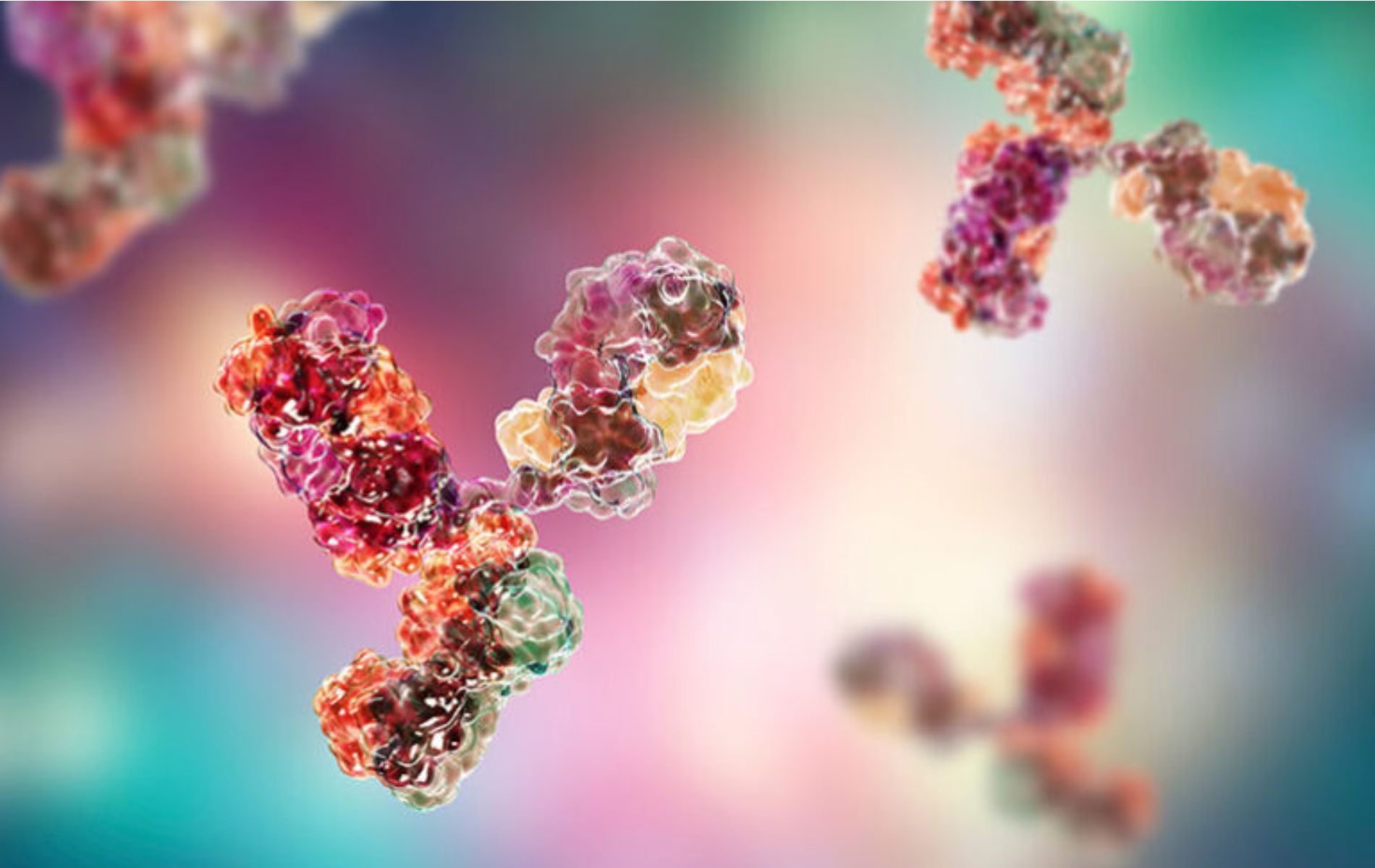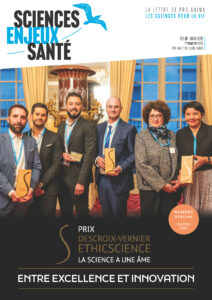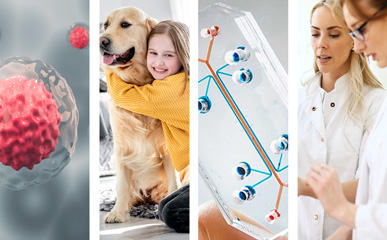
NC3Rs and NSW Government investment for NAMs, JRC Summer School : Learning from the students, Automated lab for drug discovery, and more
News on non-animal methods
JULY 22-26, 2024NEWS, REPORTS & POSITION STATEMENTS
1. Report of the European Commission workshop on “The Roadmap Towards Phasing Out Animal Testing for Chemical Safety Assessments”
This report summarises the main findings and discussion from the European Commission (EC) workshop on “The Roadmap Towards Phasing Out Animal Testing for Chemical Safety Assessments” (Brussels, 11 – 12 December 2023). The aim of the workshop was to identify the major challenges in moving towards animal-free chemical safety assessment and to inform the roadmap to achieve this goal. Over 500 delegates attended the workshop, either in person or on-line, representing relevant stakeholders.
The 2nd workshop will take place in Brussels, the 25th of October and the roadmap is planned to be finalised in the first quarter of the term of the next Commission (end of 2025 / beginning of 2026).
2. Promoting Reusable and Open Methods and Protocols (PRO-MaP)
Academic research papers from life sciences fields, such as biomedicine and biology, are often missing essential details about study methods. This can undermine trust, limit the use of new methods, and hinder reproducibility and data reuse.
PRO-MaP (Promoting Reusable and Open Methods And Protocols) aims to increase and improve the reporting of detailed, structured and open methods and reusable step-by-step protocols in the life sciences, supporting the EU’s Open Science and Valorisation policies. These newly published recommendations in the JRC Publications Repository outline actions that four stakeholder groups, researchers, research institutions and departments, publishers and editors, and funders, can take to achieve these goals.These organizations must act to create an environment that rewards and incentivizes researchers to implement the recommendations for researchers.
3. Learning from the students — The impact of the JRC Summer School Non-animal Approaches in Science — Survey results
EURL ECVAM organises a biennial Summer School on Non-animal Approaches in Science, aimed at post-graduate students and early-career scientists. The Summer School, initiated in 2017, focuses on sharing knowledge about non-animal methods and technologies in science. Since its inception, four Summer Schools have trained over 400 post-graduate students worldwide. To gauge its impact, EURL ECVAM conducted a survey among alumni.
Results show that a majority of respondents indicated that the Summer School had influenced their current research or career. A greater part of them contribute to non-animal approaches in their current professional activities by actively developing Non-Animal Methods (NAMs) and encouraging others to use NAMs.
4. Recommendations on fit-for-purpose criteria to establish quality and reproducibility management for MPS
Cell culture technology has evolved, moving from single-cell and monolayer methods to 3D models like spheroids, and organoids, improved with bioengineering like microfabrication and bioprinting termed microphysiological systems (MPSs), closely replicate tissue environments and human physiology, enhancing research and biomedical uses.
However, MPS complexity introduces standardization challenges, impacting reproducibility and trust. This perspective paper published in Stem Cell Reports offers guidelines for quality management and control criteria specific to MPSs, facilitating reliable outcomes without stifling innovation. These fit-for-purpose recommendations provide actionable advice for achieving consistent MPS performance.
5. Will Labour help the UK transition away from preclinical animal research ?
In a new opinion paper, Dr Pandora Pound and Prof Merel Risked-Hoitinga highlight the need to develop a funded, evidence based transition programme to enable a shift to safe and effective human biology based approaches in research.
The notion that animal research saves human lives has become part of our collective belief system. But this belief is not based on scientific evidence. The debate about animal research has traditionally been portrayed as an animal welfare issue, but we need to grasp that this is about human health too. This is a public health issue. Let’s hope the new government recognises this and acts accordingly.
6. NSW Government invests $4.5 million to help reduce and replace animals in medical research
The Minns Labor Government has announced a $4.5 million funding package that will be a significant step in helping reduce and replace animals in medical research. The funding will be used to establish the Non-Animal Technologies Network (NAT-Net), a NSW (New South Wales)-led body that will work to develop innovative alternatives to using animals and advise on the required medical research infrastructure and regulations to support these as alternatives.
Minister for Medical Research David Harris said : “We know that non-animal technologies in medical research are the way forward and NAT-Net will be a driving force behind these exciting Australian-first developments led by NSW.”
TOOLS, PLATFORMS, CALLS
7. Organ-on-chip applications by organ type – what has been done ?
In this article, biotech Dynamic 42 provides examples for specific organ models that have been used in the past, providing the respective literature for your reference. If you start looking yourself, you will be able to identify original research on more applications than the ones listed here. There are too many to mention them all, but they hope this will provide you with a good overview to start with.
If you have published using organ models or have a publication that you think should be included in this list feel free to get in touch as they are more than happy to add it to the list.
8. NC3Rs invests £4M in non-animal methods infrastructure grants
A key part of the NC3Rs mission is to promote the use of non-animal methods such as 3D tissue models, microphysiological systems and in silico/computational tools to actively replace in vivo studies. The widespread use of non-animal methods across the biosciences sector is often limited by access to the required infrastructure and the NC3Rs is committing £4M to help address this through new infrastructure grants.
Multidisciplinary, cross-institutional, cross-departmental or cross-sector applications are of particular interest. Proposals with an industrial partner are strongly encouraged. The call will not provide capital funds for improving buildings.
Deadline for submitting full application : 30 July 2024, 4pm
9. NC3Rs RIVER Recommendations : call for participants
Reporting standards help researchers ensure that manuscripts are complete, building on experience developing and revising the ARRIVE guidelines. The NC3Rs is currently running a user testing study, to gather feedback on the RIVER recommendations : Reporting In Vitro Experiments Responsibly. The recommendations have been developed by a diverse, international working group, drawing from its expertise in research funding and publishing, methodology and statistics, and research in academic, regulatory and industry settings. They were released as a preprint in June 2023.
If you are an in vitro researcher in the process of writing a manuscript (or planning to do so shortly), and are interested in user testing the recommendations, you can register your interest by Friday 2 August 2024, and send your draft manuscript by Wednesday 28 August 2024.
INDUSTRY, BIOTECH & PARTNERSHIPS
10. Bioprinted Tissue Therapeutics : $200 Million Partnership between Aspect Biosystems and the Governments of Canada and British Columbia
The investment will support a $200 million, multi-year project to advance Aspect Biosystems unique clinical biomanufacturing capabilities, full-stack tissue therapeutic platform, and pipeline of bioprinted tissue therapeutics. These next generation therapeutics are designed to replace, repair, or supplement biological functions in the body with the aim of delivering a new class of truly disease-modifying treatments and functional cures for some of the most elusive diseases.
“Today’s investment in Aspect Biosystems strengthens Canada’s biotech sector, enhancing innovation and leadership in healthcare” said François-Philippe Champagne, Minister of Innovation, Science and Industry. “It accelerates our transition from ideas to globally competitive products, while also bolstering our response to health emergencies, attracting international investments and creating high-quality jobs for Canadians”
11. Why this tech vet is building a lights-out lab to make drug discovery more like software development
Ari Gesher, a veteran technologist who was a key player at Palantir, the publicly-traded big data analytics company, wants to build a fully automated “lights-off” lab for drug discovery at Parallel Bio.
The pharma industry, for all its advances, faces a fundamental challenge : inefficiency. “I think if we look at drug discovery writ large, what’s missing [in early-stage development] is testing in humans,” Gesher said. Animal models compound the problem. “Organoids have the potential to really change the entire pipeline structure in pharma because you get to do much earlier testing in very high fidelity, what are essentially human models.” the technologist explained.
12. OCTO : A world model for biology
After a decade of deep learning, AI is ready to make an impact on drug development. Large-scale models like AlphaFold, Evo, and ESM3 can now predict the structure of biomolecules with near experimental accuracy and design selective therapies against them. While this addresses one hurdle in drug development, most drugs still fail not because of their structure, but because they target the wrong proteins or are tested in the wrong patients. This is a fundamentally different problem and to date there are no models that tell us which targets to drug or in which patients to drug them.
Oncology Counterfactual Therapeutics Oracle (OCTO) is a massively multimodal, transformer-based model trained on proprietary data from thousands of patients’ tumor. OCTO incorporates spatially-aligned, multimodal data from different tumor regions into a unified representation. After training, OCTO can accurately reconstruct high resolution, 16-channel protein images from surprisingly little data (1 – 2% of the total patches revealed across all protein channels).
SCIENTIFIC DISCOVERIES & PROTOCOLS
13. Brain organoid size matches intensity of social problems in autistic people
Stem cells from autistic toddlers with prominent social and cognitive challenges form larger cortical organoids than do those from toddlers with milder forms of autism, according to a new study. The findings suggest that larger-than-usual brain size — previously reported in some autistic children—is related to key autism traits.
“Brain size is an indicator,” says lead investigator Alysson Muotri, professor of pediatrics and cellular and molecular medicine at the University of California, San Diego. More specifically, he explains, the large size hints at an overabundance of neurons that may interfere with neuronal circuits. “The work illustrates the insights to be gained from organoid models”, says Tomasz Nowakowski, associate professor of anatomy, psychiatry and neurological surgery at the University of California, San Francisco, who wasn’t involved in the work. “Anytime you can correlate any model with patient’s characteristics is wonderful and validates the model that you are using. It’s admirable that the authors were able to do this,” says Flora Vaccarino, professor of neuroscience at Yale University, who was not involved in the study.
14. Modeling human immune responses to vaccination in vitro
The human immune system is a complex network of coordinated components that are crucial for health and disease. Animal models, commonly used to study immunomodulatory agents, are limited by species-specific differences, low throughput, and ethical concerns.
Human in vitro modeling is an emerging approach for preclinical evaluation of candidate vaccines with certain key advantages over animal models in accounting for species specificity and enabling direct benchmarking in the same study participant, while accounting for demographic variables such as age, sex, and comorbidity. 2D models offering simplicity and practicality and microphysiological 3D models that consider tissue architecture can model innate and adaptive immune responses and can accelerate and de-risk vaccine discovery and development.


